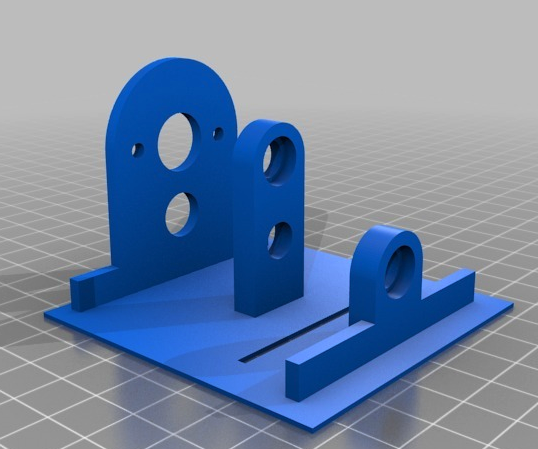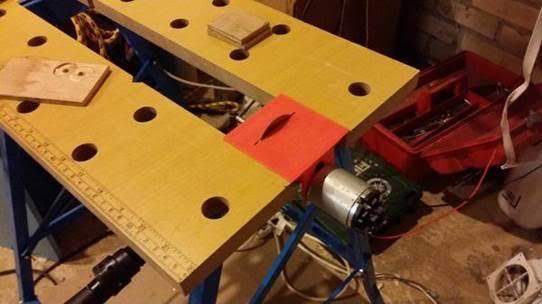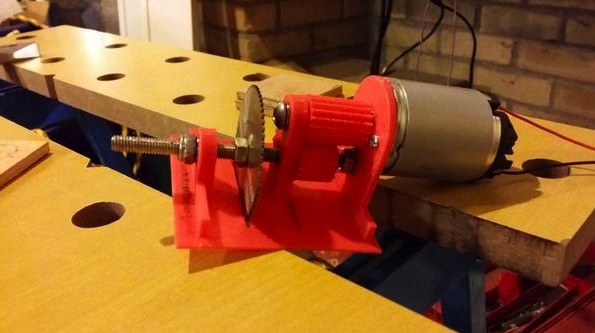 Perhaps it’s a gene, or perhaps it’s a learned hobby, but one thing is for sure: if you were to ask many of the ‘makers’ out there when they first fell in love with ‘making,’ many of them will say that they were born that way. This certainly seems to be the case for one man in the UK, named Jon Harrop, as well has his 7-year-old son, Alex. Both of them seem to have the love for tinkering in their blood.
Perhaps it’s a gene, or perhaps it’s a learned hobby, but one thing is for sure: if you were to ask many of the ‘makers’ out there when they first fell in love with ‘making,’ many of them will say that they were born that way. This certainly seems to be the case for one man in the UK, named Jon Harrop, as well has his 7-year-old son, Alex. Both of them seem to have the love for tinkering in their blood.
Jon, like any good parent, is always trying to find ways to keep his son’s mind stimulated, so when he had the opportunity to share a part of his own childhood with Alex, he did. He purchased him a Tamiya remote controlled buggy last Christmas with the electronics and servo kit and gave it to Alex in hopes it would bring out the maker in him as well.
“He loves chasing it around trying to catch it,” Harrop tells us. “He’ll run for miles until he is drenched in sweat chasing that thing around. When he catches it, he kicks it. Sometimes he kicks it so hard the back end snaps off and bits of broken plastic go flying everywhere. Whenever he breaks anything on the buggy we take it back home and he pulls up a chair next to me in the office, grabs my calipers and starts measuring. He’s doing lengths, depths, heights and even angles. He’s doing set theory to describe shapes using constructive solid geometry (CSG). He’s learning the strengths and weaknesses of different engineering plastics. He’s learning to read in order to operate the 3D printer. We’re doing all of this together, as a team, learning as we go.”
Harrop obviously enjoys working with his son to teach him as much as he can. However, at the same time, Harrop also likes the fact that it gets him away from the office, and closer to his family, something that he has been striving to do since suffering from what he terms his “mid-life crisis.” Working with his son was one step in the right direction, but at the same time, Harrop needed to turn back the clock a bit to a time when he was a maker himself.
“When I was young I always loved to build things in my spare time in the garage,” Harrop tells us. “So I cleared some space in our garage and went out and bought all of the power tools I had never been allowed at home as a teenager: a MIG welder, a table saw and an Ultimaker 2.”
Harrop also enjoys playing around with his Dremel tool, and he frequently buys random attachments for it just for the fun of it. When he was accidentally sent an extra 50mm circular saw attachment, he began thinking about what he could use it for.
“[I] realised I could try to make my own mini table saw to practice on in the hope that I would be less likely to chop my own head off using my real 1.5kW table saw,” he tells us.
So this is exactly what he decided to do. He first envisioned what a 3D printed table saw might look like, before using OpenSCAD and digital Vernier calipers to begin measuring and modeling his saw.
“My Ultimaker 2 has a 200 micron tolerance so I take that into account,” explained Harrop. “For example, if I want a 10mm diameter bearing to fit in a hole then my design for the 3D printer uses a 10.2mm diameter hole. I’ve designed lots of things using OpenSCAD and it is certainly a useful tool but I think there is a lot of room for improvement in the current consumer-level software stacks for 3D printing. In particular, I would really like an OpenSCAD-like tool that just tessellated designs represented as isosurfaces of functions over x, y and z using an algorithm like marching cubes.”
The saw, which obviously isn’t 100% 3D printed, is built with the aforementioned saw blade, as well as M3 and M6 bolts, bearings, nuts, a 110V DC motor, and a grub screw to connect the motor’s gear into its shaft. The end result, as you can see in the photos provided, looks, well…. like a 3D printed table saw. As for how well it actually works though, even Harrop was surprised by the results.
In fact, he never expected it to work at all, but when he gave it a try, he found that it actually worked “amazingly well.”
“You can push 6mm ply wood through it (slowly!) and it survives,” he tells us. “I’ve cut quite a bit of wood with it now and it is still in perfect working order.”
The saw can be clamped onto any workmate in order to cut wood up to 6mm thick, quite an accomplishment, we must say. Harrop has also made the design files for the mini table saw available for others to download and 3D print themselves from Thingiverse.
What do you think about this unique design? Will you be creating your own 3D printed table saw anytime soon? Discuss in the Mini Table Saw forum thread on 3DPB.com.
Subscribe to Our Email Newsletter
Stay up-to-date on all the latest news from the 3D printing industry and receive information and offers from third party vendors.
You May Also Like
3D Printing Financials: voxeljet’s Financial Reshuffle
In a series of significant announcements made on March 13, 2024, voxeljet (Nasdaq: VJET) has revealed a plan to reshape its financial structure and strategic direction. As part of these...
Japanese Aerospace Leader Invests in 3DEO and Its Metal 3D Printing Tech
Los Angeles-based metal 3D printing startup 3DEO has announced a key investment from IHI Aerospace Co., Ltd. (IA), a subsidiary of Japanese manufacturing leader IHI. This collaboration marks a significant...
2025 Renault 5 E-Tech Electric Is Latest Car with 3D Printed Accessories
Due to the required numbers, additive manufacturing (AM) has struggled to make significant inroads into vehicle interiors in meaningful numbers—at least as far as public knowledge is concerned. Typically an...
Interview: NAGASE Facilitates AM Adoption with EMPOWR3D 3D Printing Brand
The additive manufacturing (AM) market is entering a new phase in which large companies from outside of the segment have entered and begun consolidating. In reality, this trend has been...

































